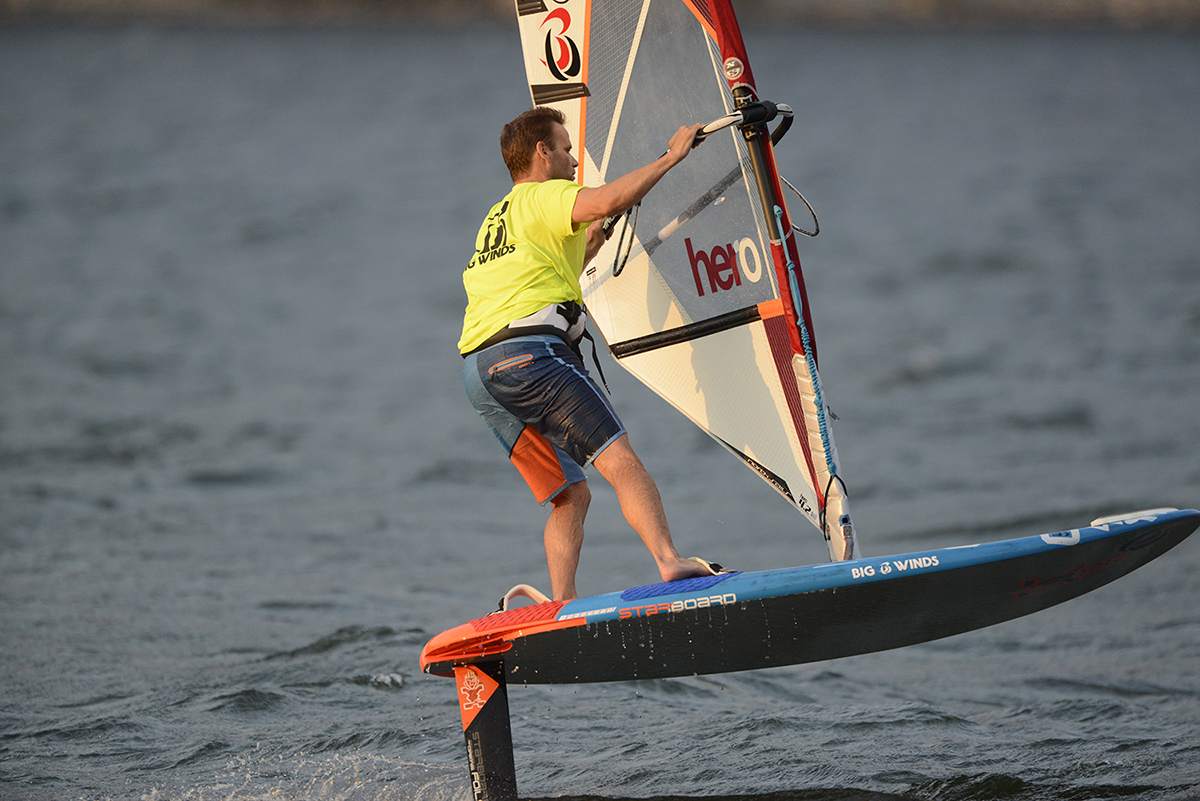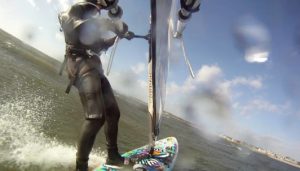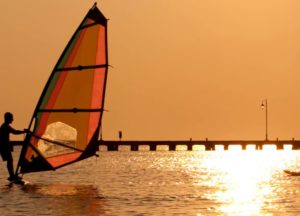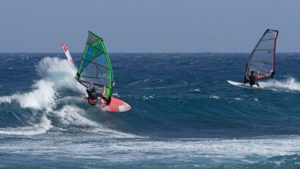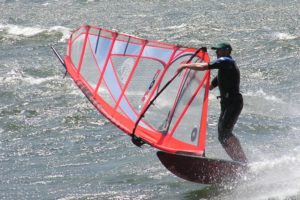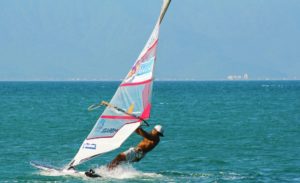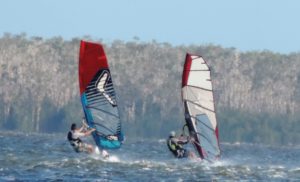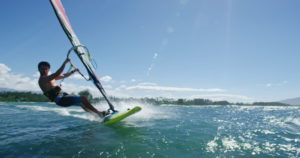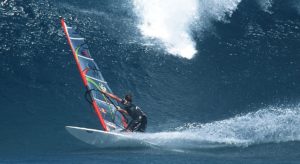Usually beginners on sailboards can start, then sail straight. However, turning a sailboard needs to be mastered to get the full benefit of windsurfing.
The basic rule when turning a sailboard long board, that is, a board that can support the sailor’s weight, is to always keep the wind at the sailor’s back.
The following advice assumes that a sailor is already competent at starting a sailboard and is able to sail a windsurfer in a straight line.
Step One in Turning a Windsurfing Long Board
To start the turn, swing the board into the wind. A turn should always be into the wind, as if turning with the wind the board will be further downwind at the end of the turn and the sailor will need to fight into the wind to get back to the starting point.
When the sailboard has lost momentum, the sailor must grab the mast where the boom connects. The mast must remain vertical with the end of the sail facing straight down wind.
The sailor can hold onto the top end of the uphaul rope if this is easier.
Step Two in Turning a Windsurfing Long Board
The sailboard should now be stationery. With the wind at the sailor’s back, the sailor now uses their feet to swing the board around the sail so the board is facing in the new direction.
This is the most complex movement of the turn and, depending on the type of board, can require some fancy footwork.
The main point to remember is that the sail must remain vertical; with the boom end of the sail pointing directly downwind at all times.
Step Three in Turning a Windsurfing Long Board
Once the sailboard is facing in the new direction, it is a simple matter of bringing the sail onto the wind and away the board should go.
This technique of turning a sailboard can be quite difficult at the start, but with practice the turn can be done quite proficiently.
An advanced technique on a windsurfing long board is to dig the end of the board into the water to spin the board around, rather than using the feet.
Also with more practice, the sailor’s skill in turning can be developed to a point where it is possible for the sailboard to remain on the plane throughout the turn. This is called a Carve Gybe; with an even more advanced turn being the Duck Gybe.
Both these turns are usually done on a windsurfing short board, however they can be accomplished on a windsurfing long board.
Like all techniques in the water sport of windsurfing, a sailor will only improve with more practice.

